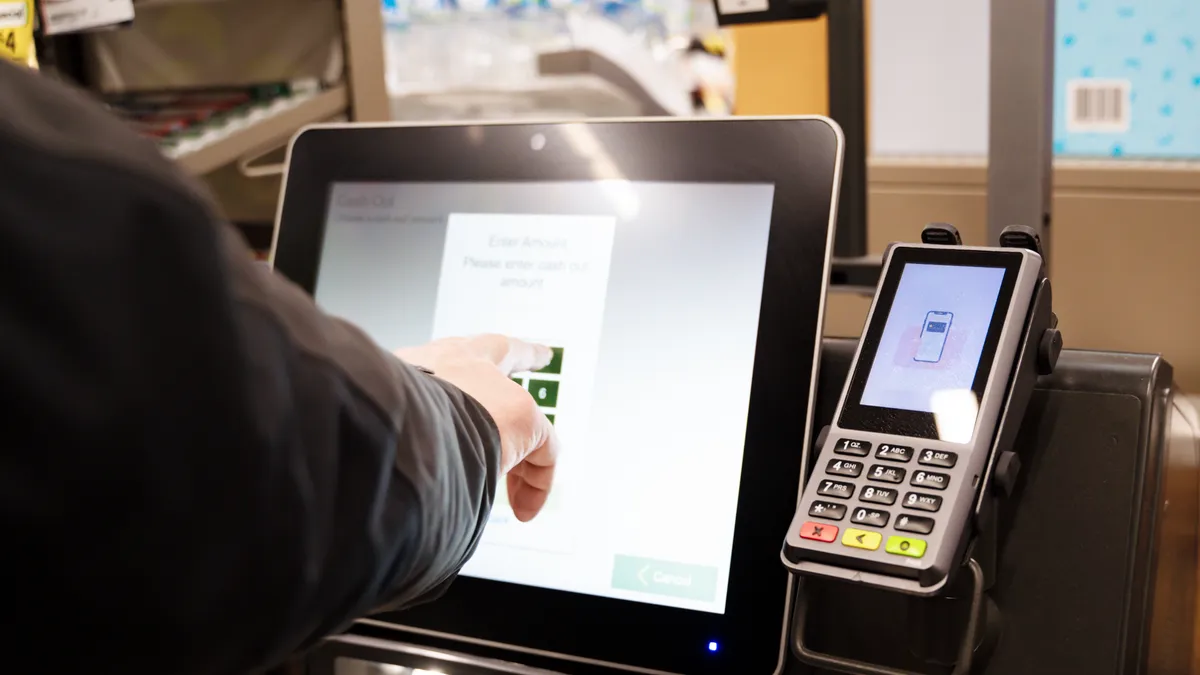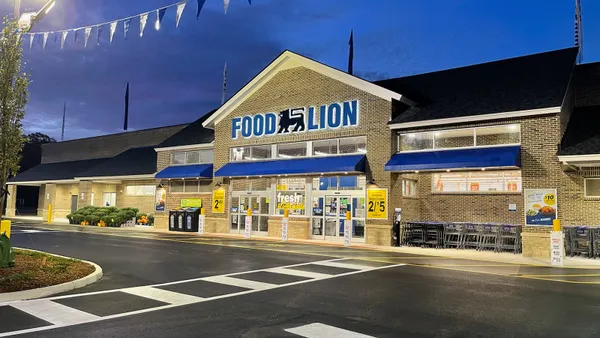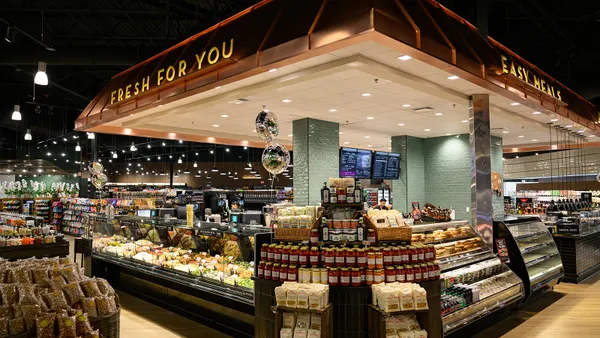Aisles Abroad is a regular feature that examines notable grocery initiatives outside the U.S.
Grocery checkout is having something of an identity crisis at the moment. Do shoppers love or loathe self-checkout? Will frictionless stores à la Amazon’s Just Walk Out ever take off for full-sized supermarkets? How can grocers better combat shrink at checkout?
As checkout experiences face ongoing scrutiny around customer experience, shrink and labor concerns, a look at grocers outside of the U.S. shows checkout innovation is alive and well.
Here’s a rundown of some of the unique checkout offerings and digital payment tools that food retailers abroad have rolled out recently.
Ready to pay? Smile!
In 2020, an “ultra-innovative” Carulla FreshMarket in Bogotá, Colombia, debuted a SmileID payment option as part of a bevy of other tech innovations that also included e-lockers, robots and click-and-collect drive-thru, according to parent company Grupo Éxito.
Since then, SmileID has expanded beyond that innovation lab store to more Carulla locations, including the location at the El Tesoro mall in Medellín, Colombia.
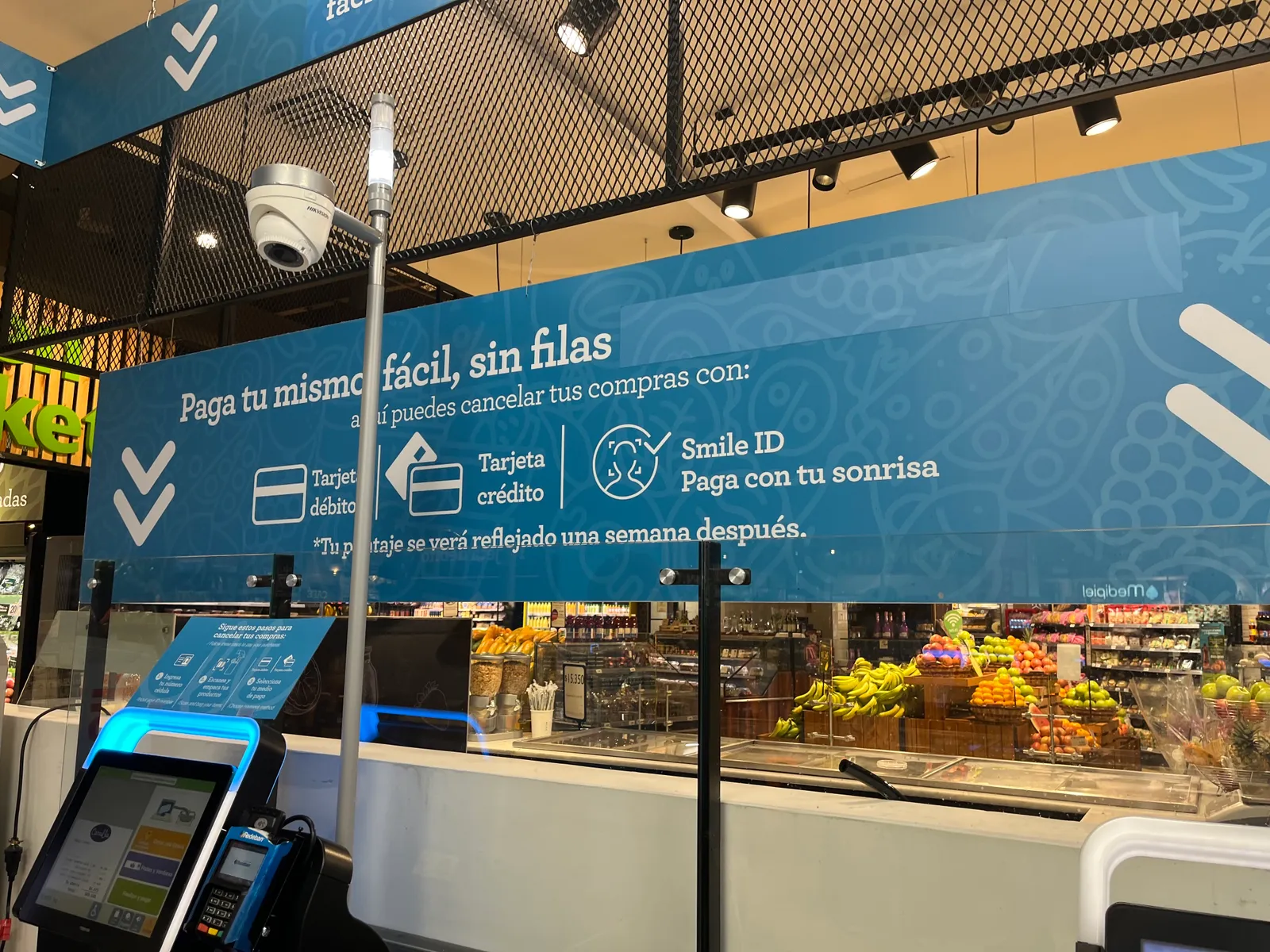
SmileID uses facial recognition to identify adult customers and give them a faster checkout experience at self-checkout. To set it up customers take a picture of their face in the Carulla app and then link a credit card.
SmileID is just one of the ways that Grupo Éxito aims to advance digital innovations. Other efforts include electronic shelf labels, virtual assistants and product information provided through augmented reality when customers scan a QR code.
Similarly, some of Alibaba’s Hema supermarkets in China have also offered facial recognition payment at self-checkout stations.
Scan-and-go meets personalized pricing
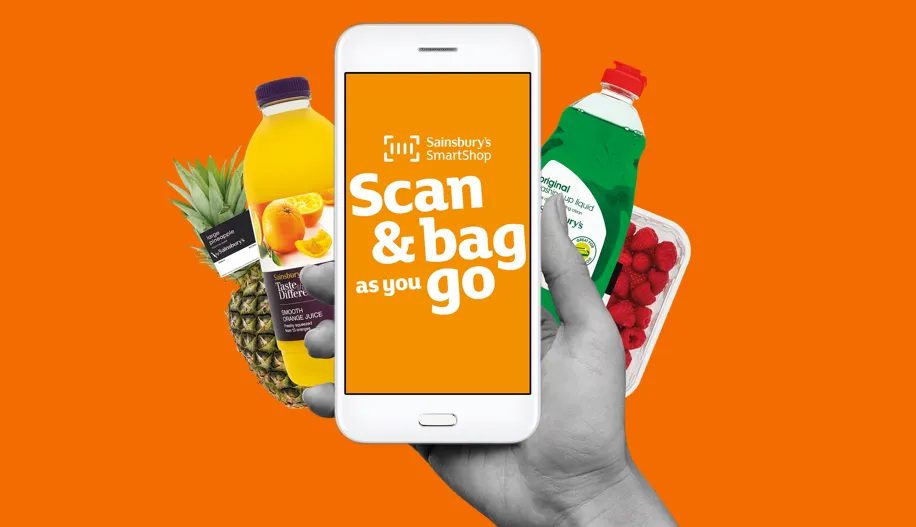
Instead of seeing discounts and deals applied at the end of the checkout process — usually after the products are scanned but right before payment — Sainsbury’s rewards members can see personalized pricing options before they even start shopping.
About six years ago, the U.K. grocery chain started trialing new scan-and-pay technology. Called SmartShop, the mobile solution, which is available on the Apple App Store and Google Play, allows customers to scan and pack items as they shop and then pay at either a SmartShop checkout or through Apple Pay.
The grocery chain offers its Nectar loyalty program users personalized pricing on their regularly purchased products when they use SmartShop at stores and also when they shop online. Customers can get “Your Nectar Prices” on store brands and national brands and earn points on items with a personalized price.
Frictionless checkout advances
German discounter Netto recently opened its second “smart supermarket” featuring frictionless checkout technology from Trigo. At 800 square meters — approximately 8,600 square feet and triple the size of their first store — the store holds roughly 5,000 SKUs.
It’s the latest step forward as Trigo looks to bring its technology to “full-sized urban supermarkets.” Last March, Trigo and German grocer Rewe launched a 600-square-meter “hybrid-autonomous supermarket” that offers both traditional and frictionless checkout options.
This refreshed location also provides real-time receipts.
“Shoppers at the new Netto store will be able to view and approve their baskets and pay (using card or mobile payment) before they leave the store. We predict this feature will accelerate consumer adoption of frictionless checkout by inspiring confidence and trust in the technology,” Trigo CEO Daniel Gabay said in a blog post, noting that Trigo plans to have real-time receipts at all of the stores that use its technology going forward.
Slow checkout
Sometimes, innovation means slowing down instead of speeding up the customer experience. As grocers have rolled out faster checkout options, Dutch grocer Jumbo has done the opposite with the recent expansion of its “chat checkout” lanes that encourage customers and cashiers to leisurely talk.

After first experimenting with the concept in 2019, the grocer decided to bring Kletskassa — which translates to “chat checkout” in English — to more of its stores to help serve an aging population and boost community-building efforts.
Jumbo isn’t the only grocer embracing shopper-worker connection at the grocery checkout lanes. French grocer Carrefour has a similar offering called Blablabla Caisses, which translates to “Blablabla checkouts” and Canadian grocer Sobeys also created a slow checkout lane at one of its locations. In 2017, a Tesco store in Forres, Scotland, introduced a “relaxed” checkout lane so customers could take their time unloading and carting away their goods.
The talkative checkout lanes are just one example of how grocers can use their workers to build stronger customer relations.




